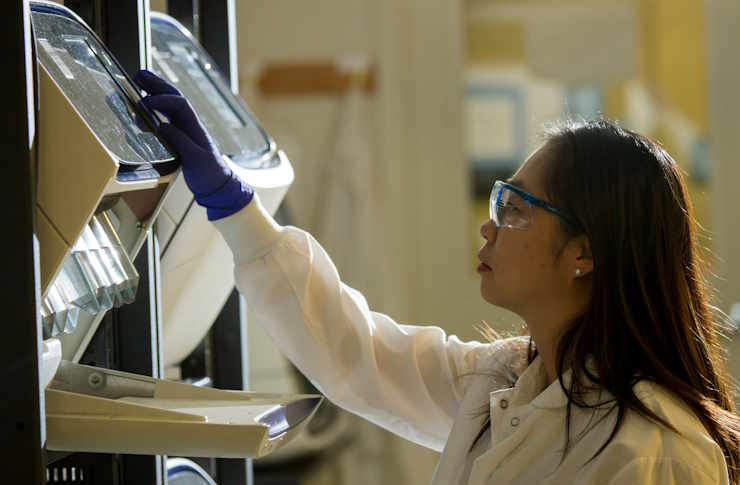Revolutionizing Healthcare: Advances in Medical Laboratory Equipment
The landscape of medical diagnostics is undergoing a profound transformation, driven by cutting-edge advancements in laboratory equipment. These innovations are not only enhancing the accuracy of diagnoses but also expediting test results, ultimately leading to improved patient care. This article delves into the latest developments in medical lab technology, exploring how they are reshaping the healthcare industry and offering insights for professionals seeking to optimize their clinical settings.

How are advances in medical lab equipment improving diagnostic accuracy?
Recent years have witnessed a remarkable surge in the precision and reliability of medical laboratory equipment. High-resolution imaging systems, coupled with artificial intelligence-powered analysis tools, have significantly reduced the margin of error in diagnostic procedures. For instance, digital pathology platforms now allow for the examination of tissue samples at unprecedented levels of detail, enabling pathologists to detect subtle abnormalities that might have been previously overlooked.
Furthermore, the integration of molecular diagnostic techniques, such as polymerase chain reaction (PCR) and next-generation sequencing, has revolutionized the identification of genetic markers and pathogens. These advancements have dramatically improved the accuracy of diagnoses for a wide range of conditions, from infectious diseases to genetic disorders, allowing for more targeted and effective treatment plans.
What new lab technologies are contributing to faster test results?
The speed at which medical test results are delivered has a direct impact on patient care and treatment outcomes. Fortunately, several innovative technologies are accelerating the diagnostic process. Point-of-care testing devices, for example, have brought laboratory-quality results directly to the patient’s bedside, eliminating the need for sample transportation and reducing turnaround times from days to mere minutes.
Automation has also played a crucial role in expediting test results. Robotic systems capable of handling large volumes of samples with minimal human intervention have significantly increased the throughput of clinical laboratories. Additionally, cloud-based laboratory information management systems (LIMS) facilitate real-time data sharing and analysis, enabling healthcare providers to access results almost instantaneously, regardless of their location.
What tips can help in choosing efficient medical lab devices for clinical settings?
Selecting the right medical lab equipment for a clinical setting is a critical decision that can impact both patient care and operational efficiency. When evaluating potential devices, consider the following tips:
-
Assess the specific needs of your facility, including test volume, types of analyses required, and available space.
-
Prioritize equipment that offers multi-functionality to maximize resource utilization.
-
Evaluate the user-friendliness of the interface to ensure smooth adoption by staff.
-
Consider the long-term cost of ownership, including maintenance and consumables.
-
Verify compatibility with existing systems and the potential for future upgrades.
-
Check for regulatory compliance and certifications relevant to your region.
-
Investigate the manufacturer’s reputation for reliability and after-sales support.
How are cost-effective features being incorporated into modern medical testing equipment?
In an era of rising healthcare costs, manufacturers are increasingly focusing on developing cost-effective solutions without compromising on quality. One approach has been the miniaturization of testing equipment, which not only reduces material costs but also decreases the amount of reagents required for each test. Additionally, modular designs allow for easier maintenance and upgrades, extending the lifespan of the equipment and reducing the need for frequent replacements.
| Equipment Type | Cost-Effective Feature | Estimated Impact on Operating Costs |
|---|---|---|
| Automated Analyzers | Reduced reagent consumption | 20-30% savings on consumables |
| Point-of-Care Devices | Minimal training requirements | 15-25% reduction in labor costs |
| Digital Pathology Systems | Cloud-based storage solutions | 30-40% decrease in data management expenses |
| Molecular Diagnostic Platforms | Multiplex testing capabilities | 25-35% improvement in test efficiency |
Prices, rates, or cost estimates mentioned in this article are based on the latest available information but may change over time. Independent research is advised before making financial decisions.
Another significant trend is the development of multi-parameter testing platforms that can perform a variety of analyses using a single sample, thereby reducing the overall cost per test. Furthermore, the integration of artificial intelligence and machine learning algorithms has enhanced the predictive maintenance capabilities of equipment, minimizing downtime and unexpected repair costs.
What insights can medical lab innovations offer professionals over 40?
For healthcare professionals over 40, staying abreast of the latest medical lab innovations is crucial for maintaining a competitive edge in the rapidly evolving healthcare landscape. One key insight is the growing importance of data analytics in laboratory medicine. Modern lab equipment now generates vast amounts of data, and professionals who can effectively interpret and leverage this information will be invaluable to their organizations.
Another important consideration is the shift towards personalized medicine. Advanced diagnostic tools, such as genetic sequencing equipment, are enabling tailored treatment strategies based on individual patient profiles. Professionals in this age group should focus on developing expertise in these emerging areas to enhance their career prospects and contribute to improved patient outcomes.
Lastly, the increasing interconnectedness of medical devices through the Internet of Things (IoT) is creating new opportunities for remote monitoring and telemedicine. Seasoned professionals can leverage their experience to bridge the gap between traditional practices and these new technological paradigms, positioning themselves as leaders in the digital transformation of healthcare.
In conclusion, the field of medical laboratory equipment is experiencing a renaissance, with innovations that promise to revolutionize healthcare delivery. From improved diagnostic accuracy to faster test results and cost-effective solutions, these advancements are paving the way for more efficient and patient-centric care. As the industry continues to evolve, it is imperative for healthcare professionals to embrace these technologies and adapt their practices to harness the full potential of modern medical lab equipment.
This article is for informational purposes only and should not be considered medical advice. Please consult a qualified healthcare professional for personalized guidance and treatment.




